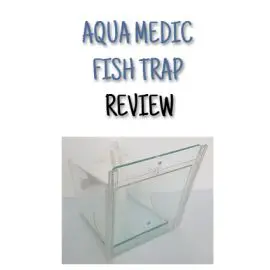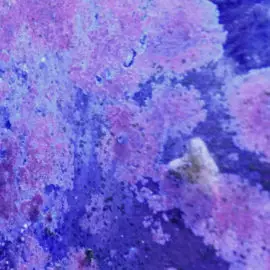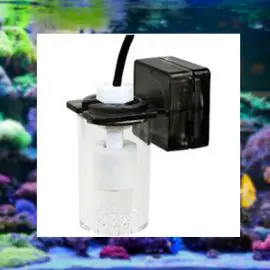What is Lateral Line Erosion (HLLE)?
HLLE is a disease mainly associated with both Surgeonfish (Tangs) and Angelfish within marine ornamental fish, although it can affect other fish too.
It presents itself initially as barely noticeable pits around the eyes, head and surrounding areas. As it progresses it extends along the lateral line following the contour of the fishes back.
Left unchecked, the disease becomes far more pronounced, eventually eroding away gills and fins.

Fortunately, this disease is seldom fatal but does have the potential to leave the affected fish malformed. If caught earlier enough, it can be reversed. This is where this article becomes relevant.
Can you cure Lateral Line Erosion?
If HLLE is caught in the early stages it can be reversed.
According two independent studies carried out, both carried out in 2011, the single most prevalent cause of Lateral Line Disease in ornamental fish is carbon added to the enclosed ecosystem. Therefore, by removing the carbon, you will immediately halt the progress of the disease.
Additional recommendations are to carry out a 90% water change or place the fish in an aquarium that has not run carbon.
My experience with HLLE
The picture above is my Yellow Tang, named Lemon (for obvious reasons).
I have been running carbon for years, my preferred brand has always been Vertex Rox 0.8 Carbon, however living in the UK makes it difficult to purchase at times.
Rox Carbon has never been a problem and would highly recommend it.
I was not able to purchase Rox carbon when it ran out last, so thought I would try out Red Sea Reef Spec Activated Carbon.
Without a shadow of a doubt Red Sea Carbon became the cause of Lemon’s Lateral Line Erosion. This became evident within a couple of months after I began using it.
I would like to add a disclaimer in here: The affects of Red Sea Carbon in my tank may not be experienced in other tanks.
This is my first occurrence of HLLE, and for this reason I am simply following the guidelines.
Lemon’s rehabilitation started a week ago when I removed the carbon from my system and began using Brightwell Aquatics AminOmega vitamins to the daily feed.
In addition, to boost her immunity I am supplementing her diet with Beta Glucan. See our White Spot page for more information on Beta Glucan.
I should add that she is very active and has not lost her appetite (both frozen and Nori). If not for the tell-tale signs of Lateral Line Disease you wouldn’t think anything was wrong with her.
I also have a Regal Tang in the same tank which shows no sign of HLLE at all.
Reversing Later Line Disease
It’s not often you read guidelines based on first hand experience and have confirmation of success or failure.
This article was started today on 30th May 2019. My intention is to update it with Lemon’s progress – hopefully positive progress.
This will give the reader a timeline regarding the reversal of HLLE, and if it actually works to follow the guidelines.
The date is now 30th June (coincidentally one month on).
Following the guidelines as mentioned above I didn’t see much difference at all in the first 3-4 weeks and was beginning to think I should relocate her to a tank which has not been run with carbon.
Last week things appeared to take a turn for the worst.
Lemon stopped eating and got progressively thinner. She started hiding which was out of character. At the same time the erosion along her lateral line had disappeared and her overall colour had improved.
I was very concerned and had already planned to quarantine her this weekend, when suddenly she started eating again and has reverted to her old self.
HLLE Cured!
I am happy to report that Lateral Line Erosion has been cured and Lemon is in great spirits!
I would post another picture of her if I could, but in most photos she is just a yellow blur now.



